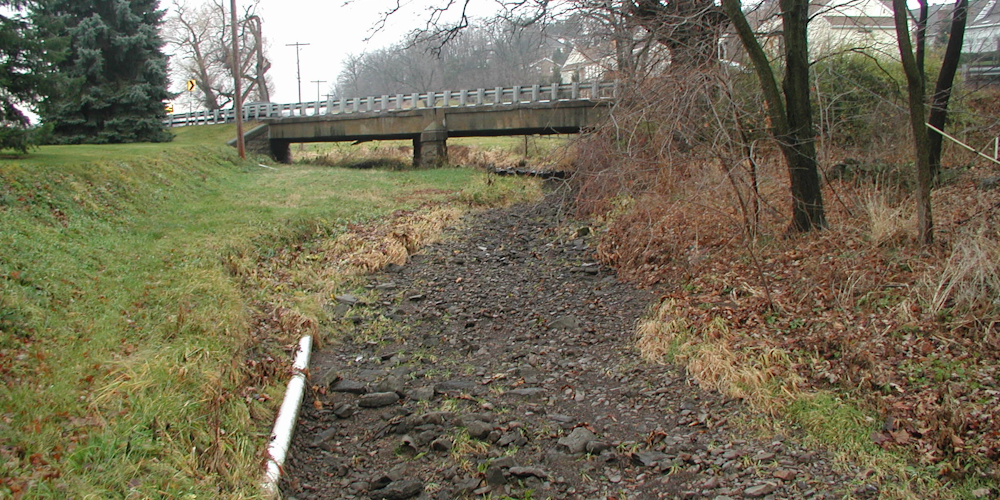Managing Droughts in the Susquehanna Basin

Drought Planning
Citizen Action
SRBC Drought Activities
Drought Planning

Droughts can take many forms and impact us all differently. Farm crops suffer. Wildfires can burn out of control. Low streamflows harm aquatic ecosystems. Public water supplies may fall short of demand, while commercial, industrial and recreational business operations may be disrupted.
Because droughts are difficult to forecast with accuracy, SRBC and its partners carefully plan ahead. The Commission’s “Drought Coordinating Committee” includes technical staff from its member jurisdiction agencies. They monitor precipitation deficits, stream flows, groundwater levels, soil moisture, and reservoir storage to determine the overall status of hydrologic conditions in the basin.
These indicators are used to establish the level of drought and include: drought watch, drought warning, and drought emergency. Each of these indicators may prompt relevant actions necessary to protect water resource availability.
| Drought Level | Water Use Reduction |
|---|---|
| Drought Watch | 5-10% Voluntary |
| Drought Warning | 10-15% Voluntary |
| Drought Emergency | 15-25% Mandatory |
Citizen Action
Only under drought emergencies are water use restrictions mandatory for nonessential water uses (e.g., landscape watering, washing cars, filling swimming pools).
Under all levels, public water systems and some industries activate water conservation plans that are tailored to their individual water sources.
Six parameters are monitored for drought conditions: precipitation deficits, stream flow, groundwater levels, soil moisture, reservoir storage information, and reported public water supply problems.
While the basin's states have the lead role in making drought declarations, SRBC works to coordinate uniform and appropriate responses across jurisdictional boundaries. SRBC has the ability and authority to declare a drought emergency if necessary to meet water resource needs within the Susuquehanna River Basin. Under a drought emergency declaration, SRBC may implement mandatory restrictions on nonessential water uses through partner enforcement agencies.

SRBC Drought Activities
In light of a severe drought in 1977, SRBC began developing drought emergency response and water conservation strategies. Current management activities include:
- Delineating areas of water supply shortage.
- Working with public water suppliers and self-supplied industries to implement drought contingency plans.
- Requiring low flow protection measures in affected streams. Some water use projects regulated by SRBC have passby flow requirements — a prescribed quantity of stream flow that must be allowed to pass a specific point downstream from a withdrawal. During a drought, low flow conditions may trigger the withdrawal to temporarily cease.

Stay informed about changes in hydrologic conditions in the basin. SRBC's Hydrologic Conditions Monitor displays the status of passby and water use mitigation projects.
- Under drought emergencies, adjusting water allocation approvals to achieve water conservation goals.
- Releasing water from upstream reservoirs which alleviates low flow stream conditions and offsets downstream water use. SRBC coordinates operations at federal, state and local reservoirs in the basin.

Low flows along the Susquehanna River near Kirkwood, Pa.
On average, severe drought occurs once every decade in the Susquehanna River Basin . Most recently, the basin suffered a drought in eight of the twenty years during the 1990s and 2000s.
Across the Mid-Atlantic region, future droughts are projected to develop more rapidly and potentially be more intense because of higher temperatures, changing precipitation patterns, and loss of soil moisture.
In response to potential increased drought occurrences, SRBC is evaluating monitoring protocols, encouraging water recycling and conservation, and working to enhance reliability of water supplies.
Drought Facts
- Drought declarations are typically made by the States in response to persistently dry conditions, reduced water supplies, and diminished surface water and groundwater resources,
- The extended drought of the mid- 1960s remains the drought of record in the Susquehanna River Basin. Severe droughts occurred in 1980-81, 1985, 1991- 92, 1995, 1998-99, 2001-03, and 2016.
- Pennsylvania averages 42 inches of rainfall a year. The driest year was 1930 with only 28.9 inches of precipitation. The driest consecutive 5-year interval was 1962-1966.
For more information:
 Dry Conditions in 2002 in the Susquehanna River Basin
Dry Conditions in 2002 in the Susquehanna River Basin